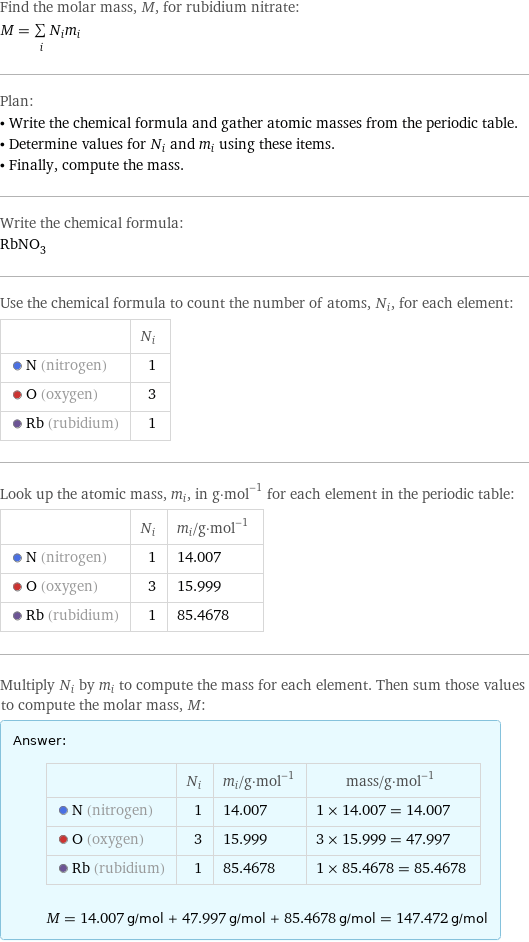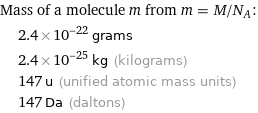Input interpretation

rubidium nitrate | molar mass
Result

Find the molar mass, M, for rubidium nitrate: M = sum _iN_im_i Plan: • Write the chemical formula and gather atomic masses from the periodic table. • Determine values for N_i and m_i using these items. • Finally, compute the mass. Write the chemical formula: RbNO_3 Use the chemical formula to count the number of atoms, N_i, for each element: | N_i N (nitrogen) | 1 O (oxygen) | 3 Rb (rubidium) | 1 Look up the atomic mass, m_i, in g·mol^(-1) for each element in the periodic table: | N_i | m_i/g·mol^(-1) N (nitrogen) | 1 | 14.007 O (oxygen) | 3 | 15.999 Rb (rubidium) | 1 | 85.4678 Multiply N_i by m_i to compute the mass for each element. Then sum those values to compute the molar mass, M: Answer: | | | N_i | m_i/g·mol^(-1) | mass/g·mol^(-1) N (nitrogen) | 1 | 14.007 | 1 × 14.007 = 14.007 O (oxygen) | 3 | 15.999 | 3 × 15.999 = 47.997 Rb (rubidium) | 1 | 85.4678 | 1 × 85.4678 = 85.4678 M = 14.007 g/mol + 47.997 g/mol + 85.4678 g/mol = 147.472 g/mol
Unit conversion

0.14747 kg/mol (kilograms per mole)
Comparisons

≈ ( 0.2 ≈ 1/5 ) × molar mass of fullerene ( ≈ 721 g/mol )

≈ 0.76 × molar mass of caffeine ( ≈ 194 g/mol )

≈ 2.5 × molar mass of sodium chloride ( ≈ 58 g/mol )
Corresponding quantities

Mass of a molecule m from m = M/N_A: | 2.4×10^-22 grams | 2.4×10^-25 kg (kilograms) | 147 u (unified atomic mass units) | 147 Da (daltons)

Relative molecular mass M_r from M_r = M_u/M: | 147